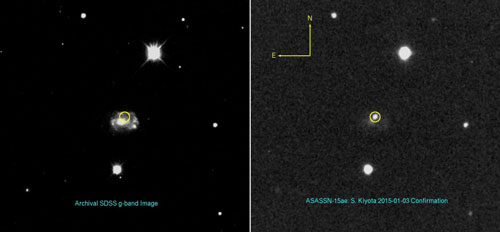 While many astronomical collaborations use powerful telescopes to target individual objects in the distant universe, a new project at is doing something radically different: using small telescopes to study a growing portion of the nearby universe all at once.
While many astronomical collaborations use powerful telescopes to target individual objects in the distant universe, a new project at is doing something radically different: using small telescopes to study a growing portion of the nearby universe all at once.
Jan 8th, 2015
Read more
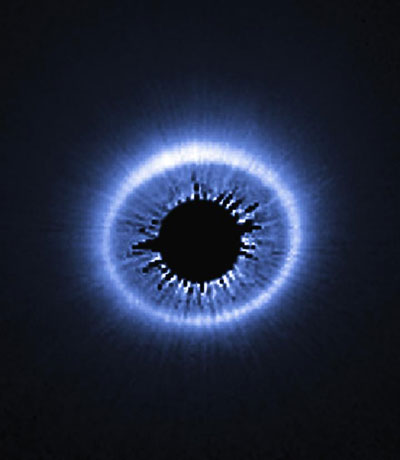 A NASA-sponsored website designed to crowdsource analysis of data from the agency's Wide-field Infrared Survey Explorer (WISE) mission has reached an impressive milestone. In less than a year, citizen scientists using DiskDetective.org have logged 1 million classifications of potential debris disks and disks surrounding young stellar objects (YSO). This data will help provide a crucial set of targets for future planet-hunting missions.
A NASA-sponsored website designed to crowdsource analysis of data from the agency's Wide-field Infrared Survey Explorer (WISE) mission has reached an impressive milestone. In less than a year, citizen scientists using DiskDetective.org have logged 1 million classifications of potential debris disks and disks surrounding young stellar objects (YSO). This data will help provide a crucial set of targets for future planet-hunting missions.
Jan 7th, 2015
Read more
 Working at temperatures matching the interior of the sun, researchers at Sandia National Laboratories' Z machine have been able to determine experimentally, for the first time, iron's role in inhibiting energy transmission from the center of the sun to near the edge of its radiative band - the section of the solar interior between the sun's core and outer convection zone.
Working at temperatures matching the interior of the sun, researchers at Sandia National Laboratories' Z machine have been able to determine experimentally, for the first time, iron's role in inhibiting energy transmission from the center of the sun to near the edge of its radiative band - the section of the solar interior between the sun's core and outer convection zone.
Jan 6th, 2015
Read more
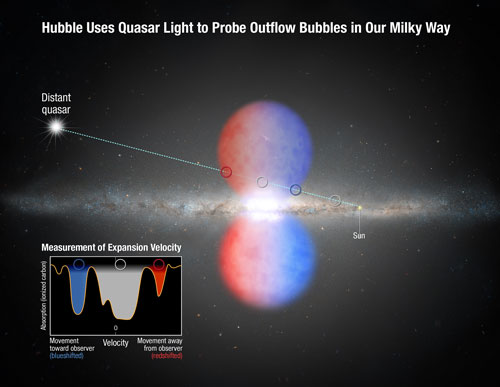 At a time when our earliest human ancestors had recently mastered walking upright, the heart of our Milky Way galaxy underwent a titanic eruption, driving gases and other material outward at 2 million miles per hour. Now, at least 2 million years later, astronomers are witnessing the aftermath of the explosion: billowing clouds of gas towering about 30,000 light-years above and below the plane of our galaxy.
At a time when our earliest human ancestors had recently mastered walking upright, the heart of our Milky Way galaxy underwent a titanic eruption, driving gases and other material outward at 2 million miles per hour. Now, at least 2 million years later, astronomers are witnessing the aftermath of the explosion: billowing clouds of gas towering about 30,000 light-years above and below the plane of our galaxy.
Jan 6th, 2015
Read more
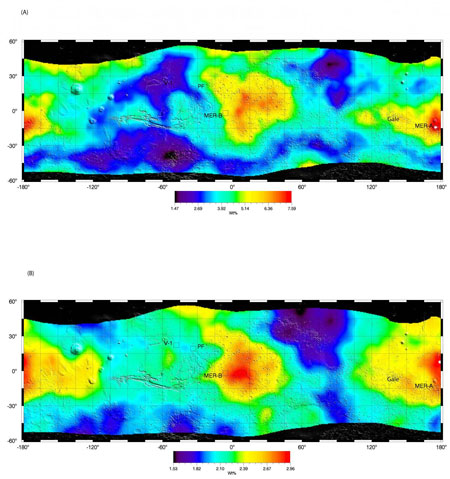 New research reveals a spatial association between the presence of sulfur and hydrogen found in martian soil. The work may in turn identify hydrous iron sulfates as key carriers of H2O in bulk martian soil.
New research reveals a spatial association between the presence of sulfur and hydrogen found in martian soil. The work may in turn identify hydrous iron sulfates as key carriers of H2O in bulk martian soil.
Jan 5th, 2015
Read more
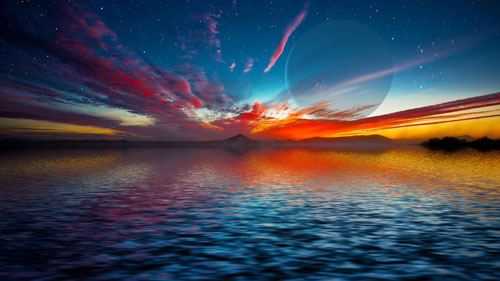 For life as we know it to develop on other planets, those planets would need liquid water, or oceans. Geologic evidence suggests that Earth's oceans have existed for nearly the entire history of our world. But would that be true of other planets, particularly super-Earths? New research suggests the answer is yes and that oceans on super-Earths, once established, can last for billions of years.
For life as we know it to develop on other planets, those planets would need liquid water, or oceans. Geologic evidence suggests that Earth's oceans have existed for nearly the entire history of our world. But would that be true of other planets, particularly super-Earths? New research suggests the answer is yes and that oceans on super-Earths, once established, can last for billions of years.
Jan 5th, 2015
Read more
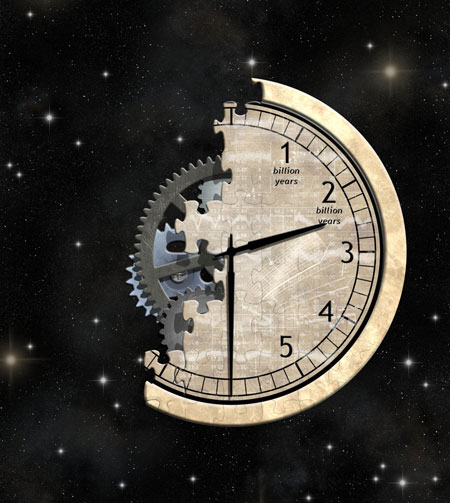 When you're a kid every birthday is cause for celebration, but as you get older they become a little less exciting. You might not want to admit just how old you are. And you might notice yourself slowing down over the years. You're not alone - the same is true of stars. They slow down as they age, and their ages are well-kept secrets. Astronomers are taking advantage of the first fact to tackle the second and tease out stellar ages.
When you're a kid every birthday is cause for celebration, but as you get older they become a little less exciting. You might not want to admit just how old you are. And you might notice yourself slowing down over the years. You're not alone - the same is true of stars. They slow down as they age, and their ages are well-kept secrets. Astronomers are taking advantage of the first fact to tackle the second and tease out stellar ages.
Jan 5th, 2015
Read more
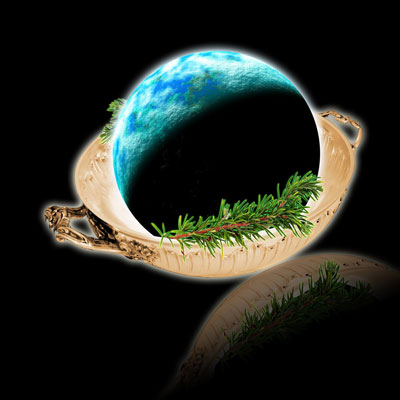 How do you make an Earth-like planet? The 'test kitchen' of Earth has given us a detailed recipe, but it wasn't clear whether other planetary systems would follow the same formula. Now, astronomers have found evidence that the recipe for Earth also applies to terrestrial exoplanets orbiting distant stars.
How do you make an Earth-like planet? The 'test kitchen' of Earth has given us a detailed recipe, but it wasn't clear whether other planetary systems would follow the same formula. Now, astronomers have found evidence that the recipe for Earth also applies to terrestrial exoplanets orbiting distant stars.
Jan 5th, 2015
Read more
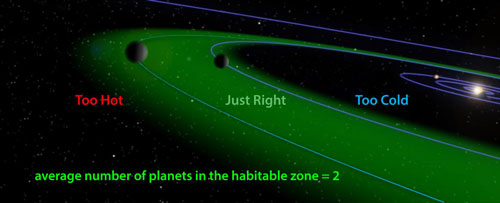 Planetary scientists have calculated that there are hundreds of billions of Earth-like planets in our galaxy which might support life, by applying a 200 year old idea to the thousands of exo-planets discovered by the Kepler space telescope.
Planetary scientists have calculated that there are hundreds of billions of Earth-like planets in our galaxy which might support life, by applying a 200 year old idea to the thousands of exo-planets discovered by the Kepler space telescope.
Jan 4th, 2015
Read more
An international team of astronomers developed a simulation of the universe in which realistic galaxies are created; their mass, size and age are similar to those of observed galaxies. Their similarity is caused by the simulation of strong galactic winds - gas winds that are blown from galaxies.
Dec 30th, 2014
Read more
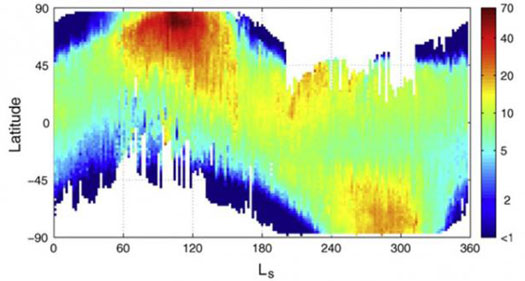 Scientists have created a 'map' of the distribution of water vapour in Mars' atmosphere. Their research includes observations of seasonal variations in atmospheric concentrations using data collected over ten years by the SPICAM spectrometer aboard the Mars Express orbiter.
Scientists have created a 'map' of the distribution of water vapour in Mars' atmosphere. Their research includes observations of seasonal variations in atmospheric concentrations using data collected over ten years by the SPICAM spectrometer aboard the Mars Express orbiter.
Dec 23rd, 2014
Read more
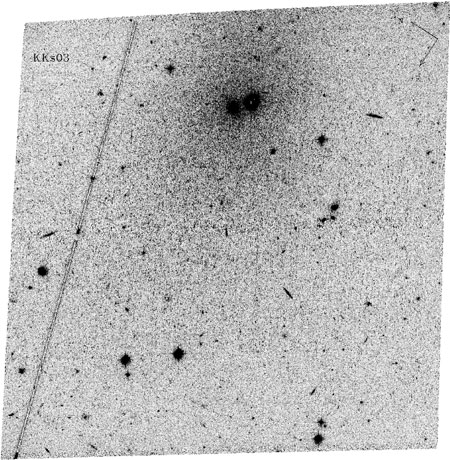 The Milky Way, the galaxy we live in, is part of a cluster of more than 50 galaxies that make up the 'Local Group', a collection that includes the famous Andromeda galaxy and many other far smaller objects. Now a Russian-American team have added to the canon, finding a tiny and isolated dwarf galaxy almost 7 million light years away.
The Milky Way, the galaxy we live in, is part of a cluster of more than 50 galaxies that make up the 'Local Group', a collection that includes the famous Andromeda galaxy and many other far smaller objects. Now a Russian-American team have added to the canon, finding a tiny and isolated dwarf galaxy almost 7 million light years away.
Dec 22nd, 2014
Read more
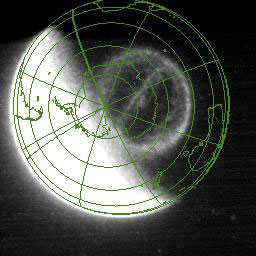 One type of aurora is known as a 'theta aurora' because seen from above it looks like the Greek letter theta - an oval with a line crossing through the centre. While the cause of the auroral oval emissions is reasonably well understood, the origin of the theta aurora was unclear until now.
One type of aurora is known as a 'theta aurora' because seen from above it looks like the Greek letter theta - an oval with a line crossing through the centre. While the cause of the auroral oval emissions is reasonably well understood, the origin of the theta aurora was unclear until now.
Dec 18th, 2014
Read more
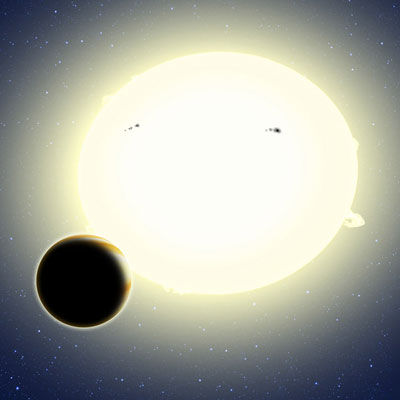 To paraphrase Mark Twain, the report of the Kepler spacecraft's death was greatly exaggerated. Despite a malfunction that ended its primary mission in May 2013, Kepler is still alive and working. The evidence comes from the discovery of a new super-Earth using data collected during Kepler's 'second life'.
To paraphrase Mark Twain, the report of the Kepler spacecraft's death was greatly exaggerated. Despite a malfunction that ended its primary mission in May 2013, Kepler is still alive and working. The evidence comes from the discovery of a new super-Earth using data collected during Kepler's 'second life'.
Dec 18th, 2014
Read more
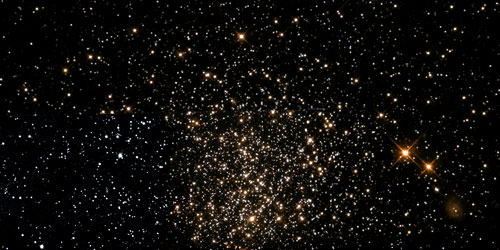 An examination of middle-aged star clusters reveals an unexpectedly narrow age range among their stars, suggesting that large groups of stars evolve differently than previously understood.
An examination of middle-aged star clusters reveals an unexpectedly narrow age range among their stars, suggesting that large groups of stars evolve differently than previously understood.
Dec 17th, 2014
Read more
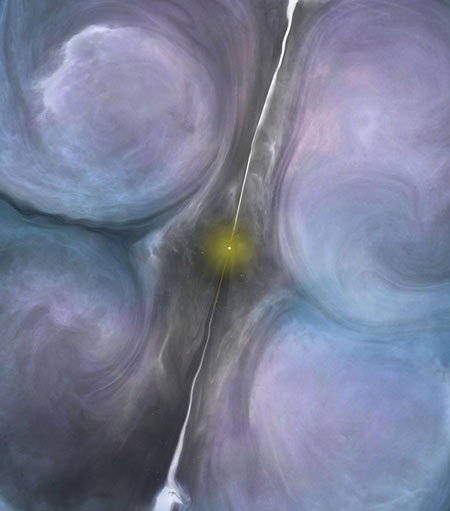 Astronomers have discovered that black holes don't have to be nearly so powerful to shut down star formation. By observing the dust and gas at the center of NGC 1266, a nearby lenticular galaxy with a relatively modest central black hole, the astronomers have detected a 'perfect storm' of turbulence that is squelching star formation in a region that would otherwise be an ideal star factory.
Astronomers have discovered that black holes don't have to be nearly so powerful to shut down star formation. By observing the dust and gas at the center of NGC 1266, a nearby lenticular galaxy with a relatively modest central black hole, the astronomers have detected a 'perfect storm' of turbulence that is squelching star formation in a region that would otherwise be an ideal star factory.
Dec 17th, 2014
Read more
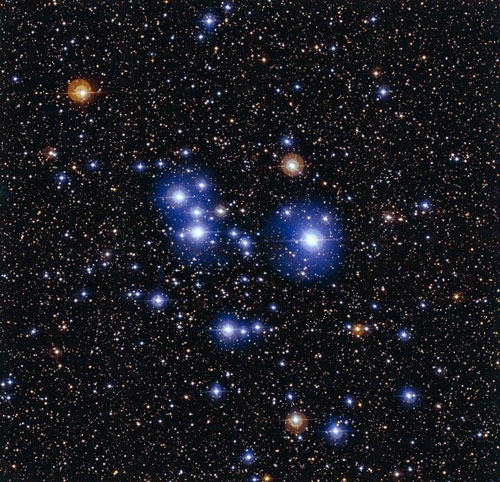 This spectacular image of the star cluster Messier 47 was taken using the Wide Field Imager camera, installed on the MPG/ESO 2.2-meter telescope at ESO's La Silla Observatory in Chile. This young open cluster is dominated by a sprinkling of brilliant blue stars but also contains a few contrasting red giant stars.
This spectacular image of the star cluster Messier 47 was taken using the Wide Field Imager camera, installed on the MPG/ESO 2.2-meter telescope at ESO's La Silla Observatory in Chile. This young open cluster is dominated by a sprinkling of brilliant blue stars but also contains a few contrasting red giant stars.
Dec 17th, 2014
Read more
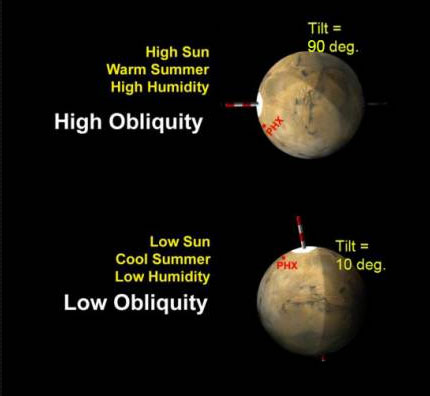 Study finds an exoplanet, tilted on its side, could still be habitable if covered in ocean.
Study finds an exoplanet, tilted on its side, could still be habitable if covered in ocean.
Dec 17th, 2014
Read more
 While many astronomical collaborations use powerful telescopes to target individual objects in the distant universe, a new project at is doing something radically different: using small telescopes to study a growing portion of the nearby universe all at once.
While many astronomical collaborations use powerful telescopes to target individual objects in the distant universe, a new project at is doing something radically different: using small telescopes to study a growing portion of the nearby universe all at once.
 Subscribe to our Space Exploration News feed
Subscribe to our Space Exploration News feed














